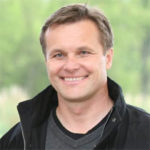ONUG Spring 2021
May 05, 2021 to May 06, 2021 |

ONF has two technical experts participating at this event; please register to attend.
 Larry Peterson, CTO, ONF
Larry Peterson, CTO, ONF
Presentation: The Future: A Testbed for 5G Wireless & Edge Computing Research | May 5th, 9:50am EST
Advances in Software-Defined Networks (SDN) make it possible to treat the network as a programmable platform: Programmable both top-to-bottom (including the forwarding plane) and end-to-end (including the access network). This talk discusses how this programmability can be used to support verifiable closed-loop control, including throughout 5G mobile networks. The talk also describes our experiences building an open source 5G-enabled edge cloud that demonstrates the value of treating the network as a programmable platform. A pilot deployment is now running in campuses and enterprises around the world, and available for others interested in deep programmability to join. A major research effort is centered on Pronto, a testbed allowing exploration of how 5G wireless can combine with Edge Computing for next-gen infrastructure.
 Thomas Vachuska, Chief Architect, ONF
Thomas Vachuska, Chief Architect, ONF
Presentation: "The Future Of SDN Controllers: Disaggregation" | May 6th, 9:30am EST
Both public and private cloud data centers used Software Defined Networking (SDN) to configure and manage their networks. The technology uses software known as an SDN Controller to accept requests from management applications and configure network switches with forwarding rules to implement each request. One controller, the Open Network Operating System (ONOS) from the Open Networking Foundation (ONF), has emerged as a leader. This talk, from the ONOS chief architect, describes the controller¢s next generation architecture based on micro-services and gRPC. It uses the example of controlling a Radio Access Network in near-realtime to explain how the control functionality is disaggregated into microservices, the motivation behind the change, and the advantages of the disaggregated approach.
